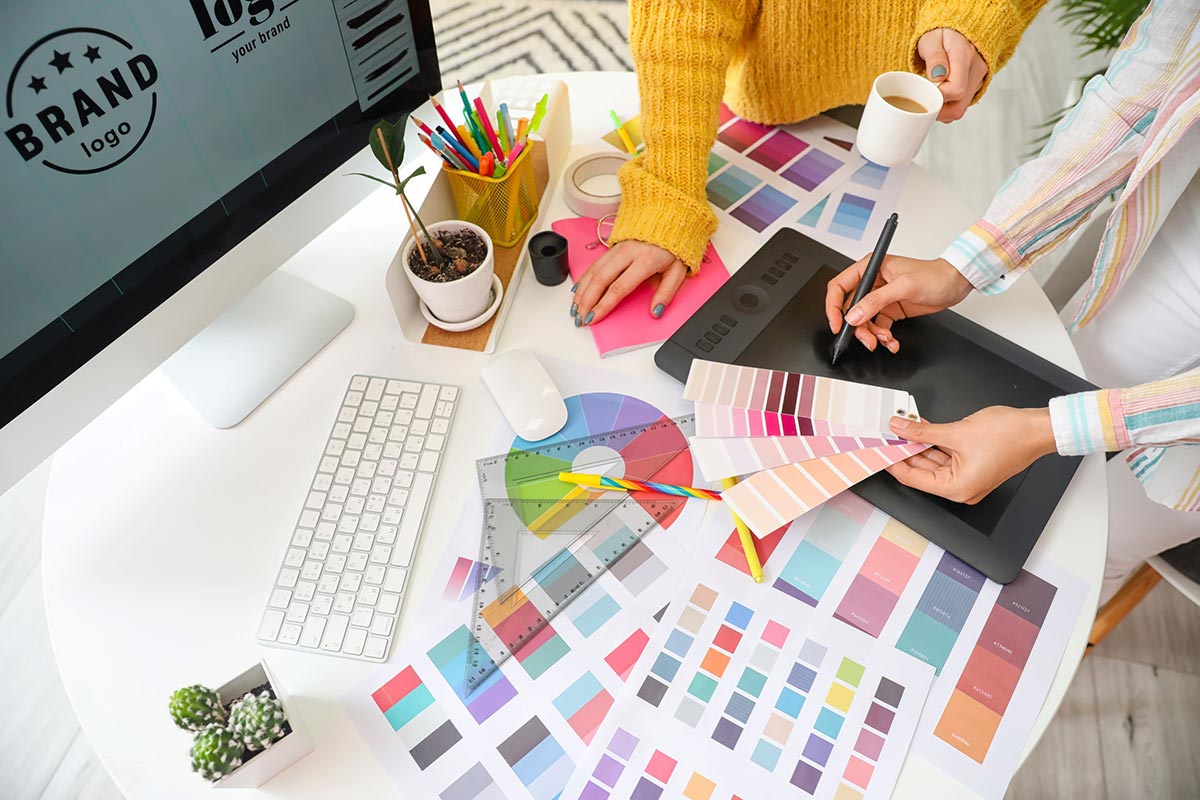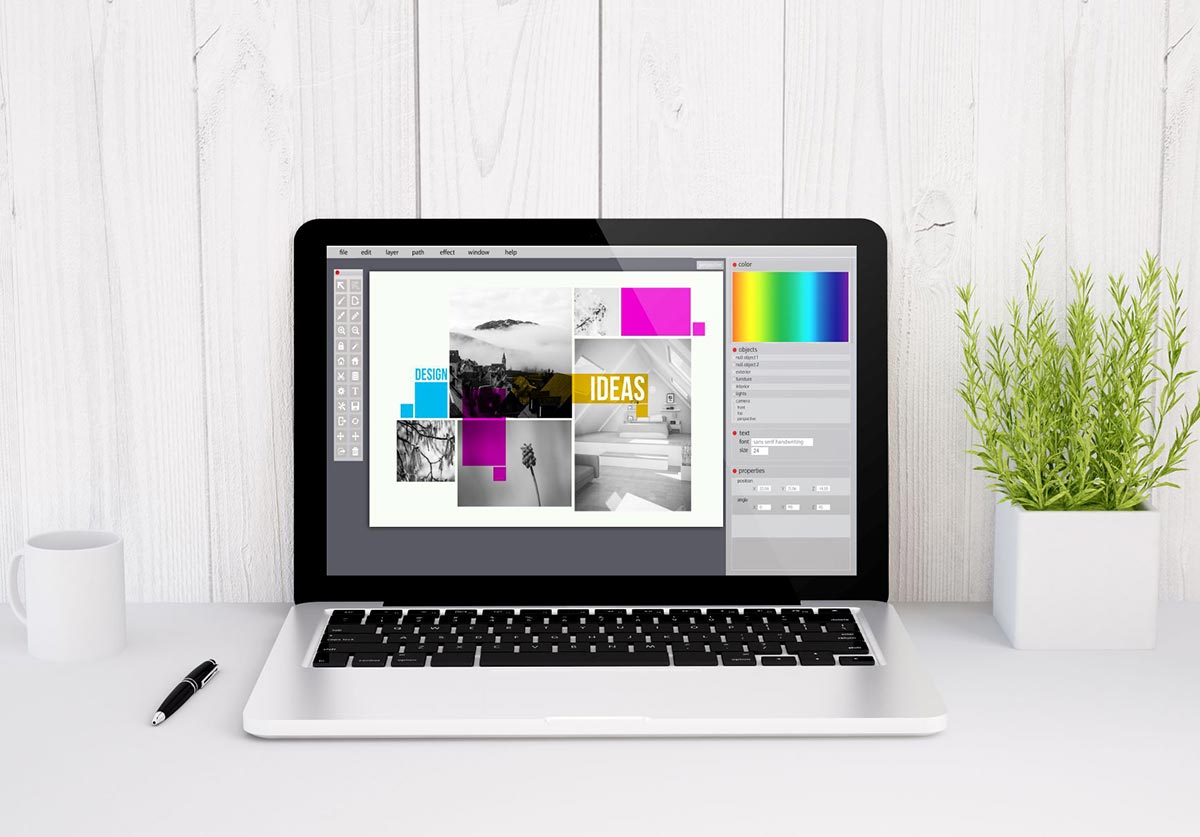Visual or graphic design jobs have a slow job outlook from 2020 to 2030 at only around 3%. But despite its slow demand, the median pay for a visual designer is still around USD$25 per hour. This means that if you’re interested in this area of expertise, you can still earn a hefty amount of money, not to mention you also get to exercise your creative skills and have a flexible working schedule. (1)
However, you may be dismayed by the idea that you only know a bit of visual design, meaning you won’t even bother looking for jobs related to this field. But take note it’s always possible to be the best in this area even if you know only a few things. This is because a great sense of visual art is always inherent. With a little bit of patience and practice on your part, you can eventually improve your aesthetics skills, even if you’re not mainly a designer.
To help you out, here are some simple yet effective ways to improve your visual design skills:
1. Study design theory
This advice may sound like a total cliche, but studying design theory, either online courses or in a physical school, will set the foundation for enhancing your visual design skills. When you delve into the basics, you can find many ways to leverage your creativity.
For instance, as you study design theory, you may know how to properly incorporate grid and color theory, understand the importance of typography, and value the notion of the golden ratio. These basic but essential theories will come in handy when creating beautiful visual designs. (2)
2. Learn how to use scale, proportion, and size
Contrast is a fundamental principle in visual design—think big and small, strong and weak, light and dark. But just because it’s an important principle doesn’t mean that you should overdo it in your designs. For instance, too much contract among colors and sizes is an ingredient to the wrong visual quality.
With that said, consider learning and understanding how you can use scale (the relative size among objects), proportion (how the scale is harmonized), and size (refers to the physical dimension of a particular object) when creating visual designs. One good exercise to enhance your learning about these contrasts is training your spatial abilities.
Here are some ways you can train and exercise the way you perceive space and contrast:
- Use spatial puzzles: Even if it’s mainly a hobby for many people, jigsaw puzzles, memory games, chess, and drawing, to name a few, are all important training exercises to improve how you perceive space. If you’re not confident with the commitment it takes to finish a jigsaw puzzle, you can always opt for puzzles for kids. Doing so won’t only be rewarding, but you can also come up with cute and whimsical characters you can display.
- Play Tetris and video games: According to researchers at the University of Rochester, Tetris and video games are promising avenues to train your brain to process visual information. These types of games invite the individuals to focus on the environment’s details, like gathering equipment. (3)
3. Have visual hierarchy
Basically, visual hierarchy refers to how you organize information or components (lines, shapes, space, color, images, and typography) by order of importance on your layout. Suppose your visual designs adopt the importance of visual hierarchy. In that case, you can communicate your message easily to your audiences as it’ll guide their eyes on what to see or read next.
You can practice establishing visual hierarchy by creating different variations of a single design. You can then choose a design that correctly emphasizes the order of components you wish your readers to view first to last.
Here are some tips on how these components influence visual hierarchy:
- Fonts: Bold and large fonts will grab the viewer’s attention, which is why it’s often used for headers.
- Color: A dark and saturated color will quickly grab the reader’s attention.
- Lines: Allow you to compartmentalize information and fill in any awkward white space.
- Space: Similar to lines, space will also allow you to separate information or components. It’ll also allow you to emphasize important aspects.
- Images: Give users a break from reading blocks of texts, making the design more readable.
- Shapes: Often used for aesthetic purposes. (4)
4. Understand positive and negative spaces
A balance of positive and negative spaces, both of which are considered important elements of painting, will allow the eyes to travel to the object you want to emphasize with ease. Essentially, negative space is the background, while positive space is the foreground. If you have a convoluted negative space, then there’s a tendency that it may cause fatigue to the eyes, which will divert the viewer’s attention to the primary object.
To create a harmonious space, try creating an illusion of depth, especially on a two-dimensional surface. This can be achieved by shading, shadowing, highlighting, and overlapping objects. By doing so, the negative space won’t look too busy, and the viewer’s eyes can still be easily directed to the object. (5)
5. Be meticulous
Regardless of what field you’re in, being meticulous is always an important attitude to have. This is especially true when you’re working as a visual designer where attention to detail is always a significant part of the job. That’s why successful graphic designers always pay attention to everything, even how small the detail is.
With that said, it’s important that you don’t blatantly place any elements on your design. Instead, try to organize appropriately, use the right colors, and, most importantly, aim always to transport your audience to the world you’re trying to create for them.
Final words
At first glance, the ways mentioned in this article might sound foreign to you. But take note that these effective tips are actually still applied by professional visual designers since they’re considered the foundation of visual design itself. So if you take the time to practice these tips, you can ensure that your visual design skills will improve gradually.
References
- “Graphic Designers”, Source: https://www.bls.gov/ooh/arts-and-design/graphic-designers.htm
- “The Best Ways To Improve Your Visual Design Skills”, Source: https://elearningindustry.com/how-improve-visual-design-skills
- “6 WAYS TO IMPROVE YOUR VISUAL-SPATIAL INTELLIGENCE & INCREASE YOUR EQ”, Source: https://marketing.chron.com/blog/6-ways-to-improve-your-visual-spatial-intelligence-increase-your-eq
- “3 ways to improve your visual design skills”, Source: https://uxdesign.cc/3-ways-to-improve-your-visual-design-skills-fa9dc8e583ff
- “10 TIPS TO IMPROVE YOUR VISUAL DESIGN SKILLS FOR NON-DESIGNERS”, Source: https://blog.logicearth.com/10-tips-to-improve-your-visual-design-skills-and-visual-literacy-for-non-designers
Recommended:
- A Guide for Design Students: 6 Ways to Boost Your Skills from Home
- Good Sketching Skills Make Great Logos
- 10 Worst Logo Design Mistakes



